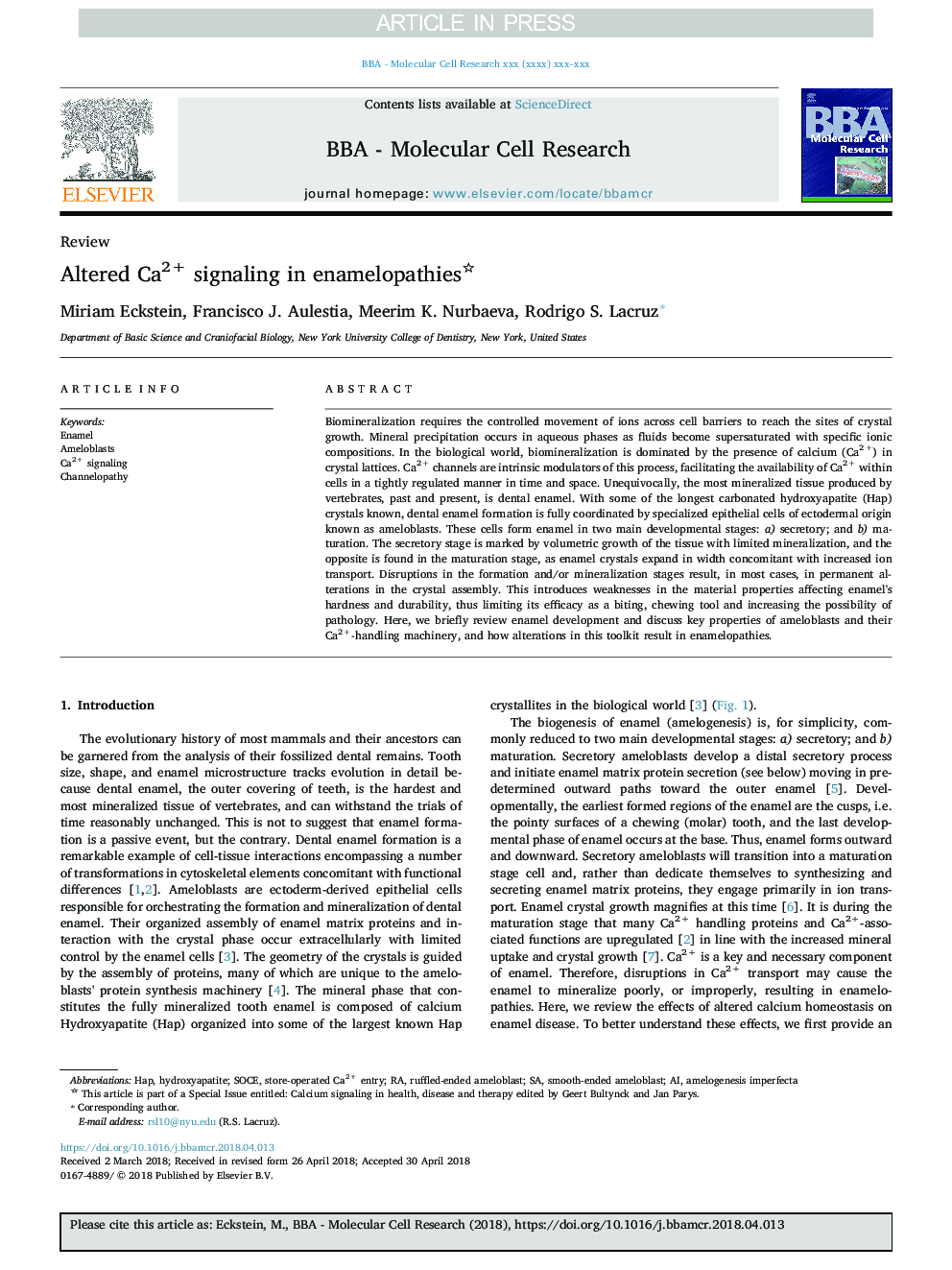| کد مقاله | کد نشریه | سال انتشار | مقاله انگلیسی | نسخه تمام متن |
|---|---|---|---|---|
| 10156746 | 1666424 | 2018 | 8 صفحه PDF | دانلود رایگان |
عنوان انگلیسی مقاله ISI
Altered Ca2+ signaling in enamelopathies
دانلود مقاله + سفارش ترجمه
دانلود مقاله ISI انگلیسی
رایگان برای ایرانیان
کلمات کلیدی
موضوعات مرتبط
علوم زیستی و بیوفناوری
بیوشیمی، ژنتیک و زیست شناسی مولکولی
زیست شیمی
پیش نمایش صفحه اول مقاله

چکیده انگلیسی
Biomineralization requires the controlled movement of ions across cell barriers to reach the sites of crystal growth. Mineral precipitation occurs in aqueous phases as fluids become supersaturated with specific ionic compositions. In the biological world, biomineralization is dominated by the presence of calcium (Ca2+) in crystal lattices. Ca2+ channels are intrinsic modulators of this process, facilitating the availability of Ca2+ within cells in a tightly regulated manner in time and space. Unequivocally, the most mineralized tissue produced by vertebrates, past and present, is dental enamel. With some of the longest carbonated hydroxyapatite (Hap) crystals known, dental enamel formation is fully coordinated by specialized epithelial cells of ectodermal origin known as ameloblasts. These cells form enamel in two main developmental stages: a) secretory; and b) maturation. The secretory stage is marked by volumetric growth of the tissue with limited mineralization, and the opposite is found in the maturation stage, as enamel crystals expand in width concomitant with increased ion transport. Disruptions in the formation and/or mineralization stages result, in most cases, in permanent alterations in the crystal assembly. This introduces weaknesses in the material properties affecting enamel's hardness and durability, thus limiting its efficacy as a biting, chewing tool and increasing the possibility of pathology. Here, we briefly review enamel development and discuss key properties of ameloblasts and their Ca2+-handling machinery, and how alterations in this toolkit result in enamelopathies.
ناشر
Database: Elsevier - ScienceDirect (ساینس دایرکت)
Journal: Biochimica et Biophysica Acta (BBA) - Molecular Cell Research - Volume 1865, Issue 11, Part B, November 2018, Pages 1778-1785
Journal: Biochimica et Biophysica Acta (BBA) - Molecular Cell Research - Volume 1865, Issue 11, Part B, November 2018, Pages 1778-1785
نویسندگان
Miriam Eckstein, Francisco J. Aulestia, Meerim K. Nurbaeva, Rodrigo S. Lacruz,